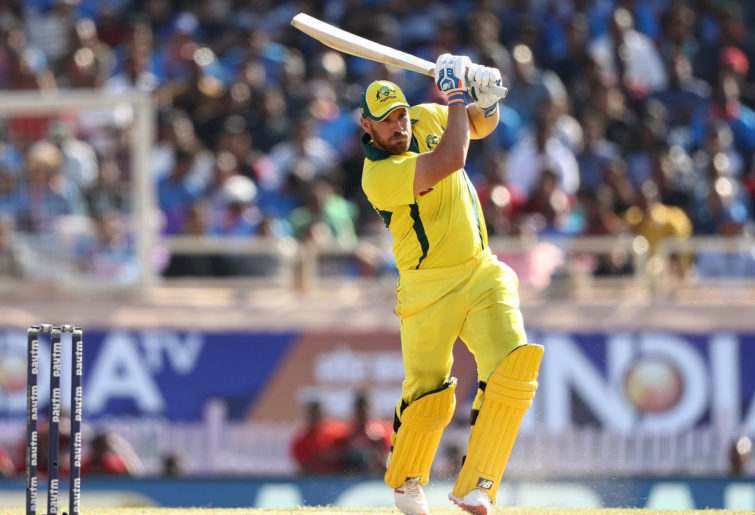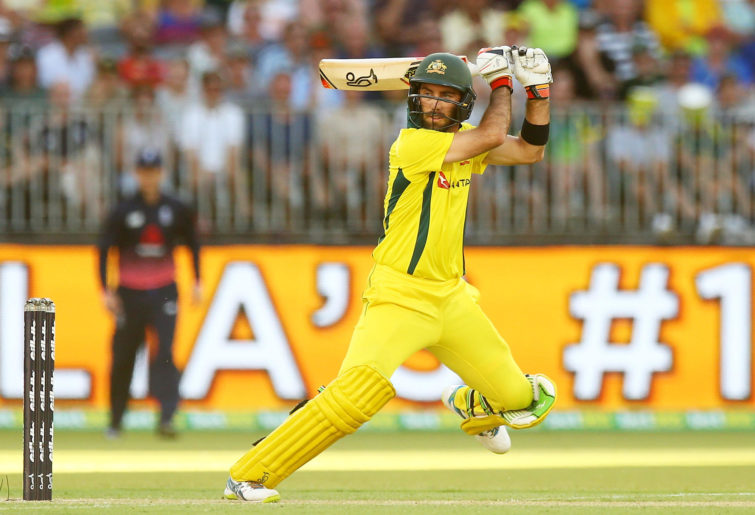Mitchell Starc finds IPL form with three wickets in Kolkata's win against Stoinis' Lucknow
With only two wickets in four games leading into the game, the Aussie paceman finished with 3/28 as his Knight Riders recorded an eight-wicket…
In the space of three months Australia has completely turned around its prospects of defending its World Cup title.
From mid-2017 until March this year, Australia won just four of its 26 ODIs.
The nadir during that period was a 5-nil loss to England in England in June last year.
Twelve months on, Aaron Finch’s side is back in Britain and it is a very different story this time around.
The turnaround started in India in March when the side came from 2-nil down to win the series by claiming the last three matches.
It was a comeback of epic proportions in a country where Australia has suffered inordinate disappointments.
The momentum was carried on to the UAE with an historic 5-nil clean sweep over Pakistan.
In the space of 23 days, Australia had won twice as many ODIs as it had in the previous 21 months.
It will be looking to extend its eight-game winning streak when it commences its World Cup campaign against Afghanistan at Cardiff on Saturday.
A squad that appeared in tatters a few months ago is now on the third line of betting behind England and India.
Australia’s about turn was achieved without the services of its two premier batsmen, Steve Smith and David Warner.

David Warner and Steve Smith (Photo by Mark Metcalfe/Getty Images)
The pair are back after their 12-month suspensions and both have shown in recent times that their talents have not been blunted by their exile.
Warner arrived in England on the back of a destructive IPL campaign where he scored 692 runs at 69.2 in 12 innings for Sunrisers Hyderabad.
Smith has reintegrated in style with 394 runs at 131 in his five warm-up matches ahead of last night’s final pre-tournament hit-out.
Warner’s return provides a conundrum as to who will comprise the opening partnership.
In his absence, Usman Khawaja partnered Finch at the top of the order and did so with aplomb.
The come-from-behind triumph in India was largely predicated on Khawaja’s batting as he reeled off scores of 104, 91 and 100 in the last three games.
He continued his rich vein of form in the UAE with 272 runs at 54.4.
Finch returned to form with a bang in the UAE with 451 runs at 112.7 on the back of two centuries, one a commanding unbeaten 153.

Aaron Finch of Australia bats. (Photo by Robert Cianflone/Getty Images)
He will definitely be one of the openers at Bristol.
There are strong arguments for either Warner or Khawaja to partner him.
In the pre-tournament practice matches both left-handers have shared the top of the order with their skipper.
Khawaja even found himself at number five against England in the warm-up game at Southampton.
Warner was rested from last night’s final warm-up match against Sri Lanka with reports suggesting he was suffering from tightness in his thigh.
He is expected to be fit for Saturday.
Regardless of how Australia structures its batting it will field a healthy balance of heavy hitters and accumulators.
While the focus has been on the return of Smith and Warner and the undeniable recent form of Khawaja one man who could have a big say in Australia’s fortunes is Shaun Marsh.
He was a beacon during the humiliating five-nil series loss in England last year with two centuries.
He also averaged 60.7 in the UAE.
Glenn Maxwell is likely to be a floater with an injection up the order likely at times during the World Cup should Australia get off to a flyer.

Australia’s Glenn Maxwell. (Mark Nolan/Getty Images)
If recent ODI series in England are anything to go by we are likely to see numerous high-scoring matches.
After the first match of the England-Pakistan ODI series earlier this month was declared a no result, the remaining four matches featured seven innings in excess of 340 runs.
Barren pitches, a white ball with minimal seam and short boundaries will all conspire against the bowlers.
We are likely to see plenty of spin throughout the tournament with Australia flagging the possibility of playing both Adam Zampa and Nathan Lyon in tandem in some games.
Wrist-spin has proven to be a valuable commodity in both forms of white ball cricket in recent times and the prospect of Zampa’s attacking nature from one end allied to Lyon’s more defensive mindset from the other could prove valuable.
The x-factor for Australia could well be Mitchell Starc.
When Australia lifted the trophy four years ago it was on the back of a stellar tournament by Starc.
At that time he was the most feared ODI bowler in the game with his combination of withering pace and late swing a handful for many teams.
If he can reclaim some of his best form, in concert with Pat Cummins. Australia will have two potent strike weapons.
The pressure heading into this tournament rests on the shoulders of England, a country yet to win the World Cup.
The host nation has been undefeated in its past 11 bilateral ODI series and has won its last eight series at home.
Since the last World Cup, England has had a 66 per cent winning record, the best of any nation.
But tournaments are not won in the lead-in.
Between World Cups Australia has endured a 49 per cent winning record but the team is peaking at the right time.
A few months ago they did not appear in the frame for a sixth title.
There is still much work to be done but the momentum is there.